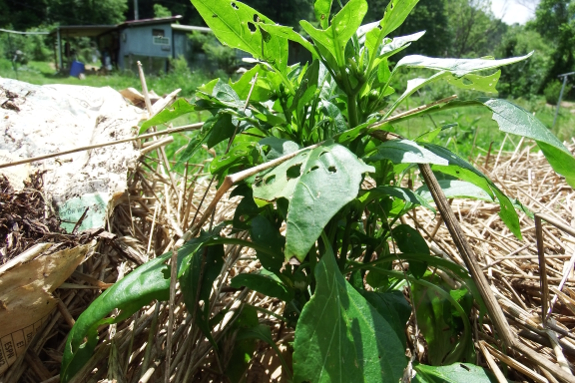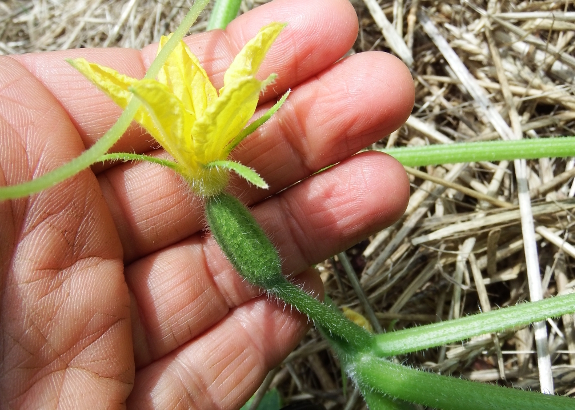
Using fresh manure in the garden

"How
did your peppers do with the half composted goat manure? Was it not too
hot?" Becki
Wilson asked, before going on to explain that she has access to fresh
--- but not composted --- manure and wants to garden now.
First of all, I should
say that the
half-composted goat manure I was using tends to have the opposite
problem. When the most volatile nitrogen has leached away and the
majority of the organic matter hasn't yet broken down, what I tend to
see is plants yellowing from lack of nitrogen rather than getting
burned from too much. That was indeed the case for the first couple of
weeks for our peppers, but they seem to be greening up and growing now
(as long as the slugs will leave them alone!)

Answering Becki's
question about her own garden is a bit more complicated. Different
types of manure have different strengths --- chicken manure, for
example, is very hot and I'd be leery of using it close to most living
plants when fresh. Topdressing about a foot away from newly planted
seedlings is generally okay, though, because by the time the roots grow
out into the impacted soil, the manure has broken down enough to be
helpful rather than harmful to their growth. But use more than you
think you need with fresh manure because you will hit that low-nitrogen period
in the middle and want your plants to have enough nutrition to survive
the gap.
If you need more
in-depth information on using manure in the garden, my Ultimate Guide to Soil contains a
whole chapter on the topic. Good luck...and I hope your new garden
grows fast and luxurious!
Want more in-depth information? Browse through our books.
Or explore more posts by date or by subject.
About us: Anna Hess and Mark Hamilton spent over a decade living self-sufficiently in the mountains of Virginia before moving north to start over from scratch in the foothills of Ohio. They've experimented with permaculture, no-till gardening, trailersteading, home-based microbusinesses and much more, writing about their adventures in both blogs and books.
Want to be notified when new comments are posted on this page? Click on the RSS button after you add a comment to subscribe to the comment feed, or simply check the box beside "email replies to me" while writing your comment.

Are you confusing the yellowing of low N with the tan/brown of excess N? Because we moved last summer, I had no pile of
adequately mellowed horse manure for my seed starts this year. I used the oldest stuff I could scrape up while March temps were still low and the sprouts did very poorly with yellow edges on brown leaves. One of those crummy multi-testers showed the soil to be "Hi N."